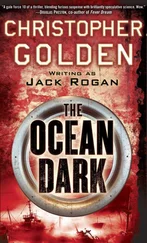In Navarro’s view, Cohn and his merry band of globalists were working to basically suppress the president’s trade policy. In the view of Cohn, Kushner, and Mnuchin, they were the adults in the room, preventing Trump from following the crazy campaign crowd into economic and political calamity.
“The Trump trade agenda does indeed remain severely hobbled by political forces within the West Wing,” Navarro wrote in a two-page memo to Trump and Priebus in late March, a document that was revealed in Bob Woodward’s book Fear. Navarro specifically called out Priebus, Rob Porter, Mnuchin, and Cohn for preventing his trade proposals from reaching the president. Navarro said he, Bannon, Miller, and Wilbur Ross were fighting the good fight. (Ross’s hawk credentials were a subject of dispute internally; both camps at times claimed or disowned him, depending on the moment and the issue.)
In that first battle between Navarro and Cohn in the Oval Office, in front of many top staffers, Trump sided with Navarro’s call for the trade policy from the campaign. Clearly he hadn’t given up on his core belief that China was robbing the United States blind on trade and that he was the president who would fix it. The rest of the officials knew, then, that Navarro could capture Trump’s ear and attention any time. And that, in their minds, made him dangerous.
That meeting sheds valuable light on the way in which Trump set about making China policy after entering the White House. He never hired a China czar. He never empowered one person. He never let one side completely remove the other from the conversations. He didn’t always side with the hawks because he was never really a hawk. But he didn’t agree with the Goldman Sachs clique either. And he wanted both sides to know it.
The Cohn-Mnuchin-Kushner group was successful in those first few months in stopping the campaign hawks from doing a lot of what they wanted. For now, there were no tariffs. Kushner maintained a close relationship with the Chinese ambassador and used it to plan the upcoming Xi-Trump summit at Mar-a-Lago. Secretary of State Rex Tillerson, Defense Secretary James Mattis, and Vice President Mike Pence were deployed abroad to manage the alliances and conduct the top-level diplomacy with Beijing.
Trump chose his national security cabinet mostly on a series of whims. Tillerson was put forth for the secretary of state position by former secretary of state Condoleezza Rice and former defense secretary Bob Gates. The Exxon oil chief was a major client of the RiceHadleyGates consulting firm. Tillerson was actually in Doha on the night of the election. The only country he had more experience with than Qatar was Russia. Trump offered him the job as the nation’s top diplomat on their first meeting. He had no China experience and no government experience at all.
Retired general Mattis spent four decades in the Marines, mostly serving in the Middle East and retiring as the head of US Central Command. Mattis was a favorite of the DC crowd because of his warrior-monk reputation and his famous “Mattisms,” the most famous of which was “Be polite. Be professional. But have a plan to kill everyone you meet.” He had run afoul of the Obama White House by pushing for more aggressive tactics vis-à-vis Iran. That, plus the fact that some referred to him as “Mad-Dog” Mattis, was enough for Trump to put him in charge of the Pentagon.
Pence was head of the transition and can be credited with populating the top ranks of the Trump administration with foreign policy conservative hawks and neocons like UN ambassador Nikki Haley and Director of National Intelligence Dan Coats, a former Republican senator. Pence was an original neocon back to his congressional days. He supported the invasion of Iraq and still thinks it was the right call. He’s fervently anticommunist. For that reason, he was a China hardliner well before that was the fashionable thing to be. But Pence’s main goal was not to find himself in the crosshairs of the president. He would have to tread carefully when interjecting on behalf of the hardliners inside the administration. But he was on their team from the start.
As he became involved in so many other issues, Kushner began handing over responsibility for managing the China relationship to Tillerson, who had no real China experience to speak of. That became obvious when Tillerson traveled to Beijing in March to meet with Xi Jinping. Standing next to Foreign Minister Wang Yi at a press conference, Tillerson said the US-China relationship should be guided by “nonconflict, nonconfrontation, mutual respect and win-win cooperation.”
Tillerson was not only parroting the talking points that Yang Jiechi had used to lecture the Trump officials in Kushner’s office building during the transition. He was also contradicting all of Trump’s campaign promises to confront China’s malign trade and economic policies. Matt Pottinger sent Tillerson’s chief of staff, Margaret Peterlin, a file of articles celebrating Tillerson’s concessions in Chinese state-run propaganda media. Only then did Tillerson understand that he had fallen into one of Beijing’s favorite traps: getting a US official to use their language and thereby endorse their vision. Obama had made the same mistake in 2013 when he repeated Xi’s call for a “new model of great power relations.” But Trump’s secretary of state was not endorsing it intentionally; he was just incompetent.
Bill’s Paper
While most eyes were focused on the fights between the famous senior figures around Trump, one level down in the administration, a quiet effort to build the structure of a new China policy for the Trump administration was being hatched. As the big shots fought for control, the worker bees hunkered down trying to turn Trump’s campaign rhetoric into an actual set of plans and get the bureaucracy on the same page.
Pottinger started day 1 as National Security Council senior director for Asia, inheriting most of his team at the Old Executive Office Building from the last administration. The first thing he did was brush off the very first memo he had written about China for the Trump campaign that past November and share it with his new team. This twelve-page memo became the starting point for the NSC to figure out what a new US strategy should look like. It ended up having more influence on the Trump administration’s approach to China than almost any other single document.
The memo was saved on Pottinger’s computer under the name “Bill’s Paper.” (There is no Bill; Pottinger used the name to throw off any person or entity who might be scouring his files surreptitiously.) It begins with the subtitle “A Balance of Power” and presents a set of concepts to explain the need for a new US approach toward China and how to get there.
The paper argues that the peace and prosperity that Asia has enjoyed since World War II, which was made possible by US hegemony, was being threatened by three shocks: the rise of the People’s Republic of China, which is laboring to displace the United States in Asia and dissolve our alliances; the dramatic nuclear and missile technology advances by North Korea; and the rising sense among America’s Asian allies that the United States is withdrawing from its role as guarantor of their security and freedom.
While the United States was distracted by wars in the Middle East and the Great Recession at home, Pottinger noted, China had quintupled its economy and built a world-class military, all without compromising its authoritarian political system or state-controlled economy. “As a result, U.S. hegemony as we knew it no longer exists in East Asia,” the memo argues. “What we have now vis-à-vis China is a dynamic and uneven balance of power (we have the military edge, they have the economic edge, and the political balance is roughly split). China’s aspiration is manifestly not to settle for a balance of power with the United States. Beijing’s intermediate-range goal is to achieve hegemony over its neighbors and the Western Pacific.”
Читать дальше











